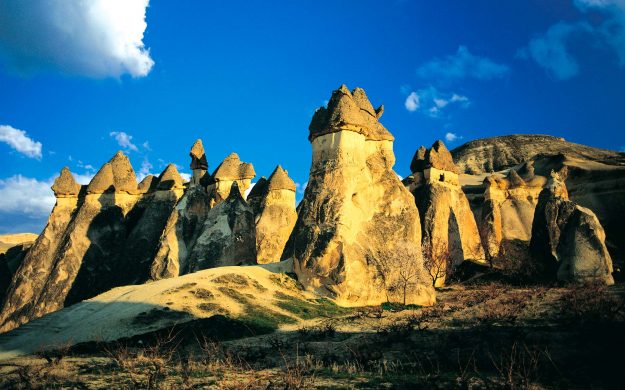Patara Adventure Tours
Patara, later renamed Arsinoe, was a flourishing maritime and commercial city on the southwest coast of Lycia on the Mediterranean coast of Turkey near the modern small town of Gelemiş, in Antalya Province. It is the birth place of St. Nicholas, who lived most of his life in the nearby town of Myra (Demre).
History
Possessing a natural harbor, Patara was said to have been founded by Patarus, a son of Apollo. It was situated at a distance of 60 stadia to the southeast of the mouth of the river Xanthos. Patara was noted in antiquity for its temple and oracle of Apollo, second only to that of Delphi. It seems certain that Patara received Dorian settlers from Crete; and the worship of Apollo was certainly Dorian. Ancient writers mentioned Patara as one of the principal cities of Lycia. It was Lycia’s primary seaport, and a leading city of the Lycian League, having three votes, the maximum.
The city, with the rest of Lycia, surrendered to Alexander the Great in 333 BC. During the Wars of the Diadochi, it was occupied in turn by Antigonus and Demetrius, before finally falling to the Ptolemies. Strabo informs us that Ptolemy Philadelphus of Egypt, who enlarged the city, gave it the name of Arsinoe (Arsinoë) after Arsinoe II of Egypt, his wife and sister, but it continued to be called by its ancient name, Patara. Antiochus III captured Patara in 196 BC. The Rhodians occupied the city, and as a Roman ally, the city with the rest of Lycia was granted its freedom in 167 BC. In 88 BC, the city suffered siege by Mithridates IV, king of Pontus and was captured by Brutus and Cassius, during their campaign against Mark Antony and Augustus. It was spared the massacres that were inflicted on nearby Xanthos. Patara was formally annexed by the Roman Empire in 43 AD and attached to Pamphylia.
Patara is mentioned in the New Testament as the place where Paul of Tarsus and Luke changed ships. The city was Christianized early, and several early bishops are known. Nicholas of Myra was born at Patara in ca. 300. Patara is mentioned among the Lycian bishoprics in the Acts of Councils (Hierocl. p. 684). The Notitiae Episcopatuum mention it among the suffragans of Myra as late as the thirteenth century.
The city remained of some importance during the Byzantine Empire as a waypoint for trade and pilgrims. During the wars between the Turks and the Byzantines, the city was abandoned. The city remains a titular see of the Roman Catholic Church, Patarensis; the seat has been vacant since the death of the last titular bishop on February 3, 2006.
Ruins
The name Patera is still attached to the numerous ruins of the city. These, according to the survey of Capt. Beaufort, are situated on the seashore, a little to the eastward of the river Xanthus, and consist of a theater excavated in the northern side of a small hill, a ruined temple on the side of the same hill, and a deep circular pit, of singular appearance, which may have been the seat of the oracle. The town walls surrounded an area of considerable extent; they may easily be traced, as well as the situation of a castle which commanded the harbour, and of several towers which flanked the walls. On the outside of the walls there is a multitude of stone sarcophagi, most of them bearing inscriptions, but all open and empty; and within the walls, temples, altars, pedestals, and fragments of sculpture appear in profusion, but ruined and mutilated. The situation of the harbour is still apparent, but it is a swamp, choked up with sand and bushes. The theater was built in the reign of Antoninus Pius; its diameter is 265 feet, and has about 30 rows of seats. There are also ruins of thermae, which, according to an inscription upon them, were built by Vespasian.
In 1993 a Roman milestone was unearthed, the Stadiasmos Provinciae Lyciae in the form of a monumental pillar on which was inscribed in Greek a dedication to Claudius and an official announcement of roads being built by the governor, Quintus Veranius, in the province of Lycia, giving place names and distances, essentially a monumental public itinerarium.
The site is currently being excavated during two summer months each year by a team of Turkish archaeologists. At the end of 2007, all the sand had been cleared from the amphitheatre and some other buildings, and the columns on the main street had been partially re-erected (with facsimile capitals). The excavations have revealed masonry in remarkable condition.
Tourism
Tourists visit the ruins and Patara as part of the Turkish Riviera. There is a 18 kilometer (11 mi)-long beach.
Customize Your Dream Adventure
We are here to help craft tailor-made adventures for individuals, couples, families, and groups of explorers.







